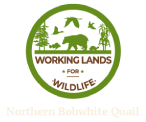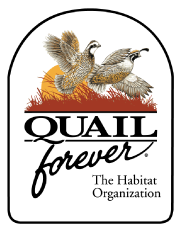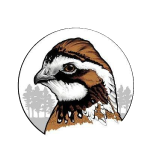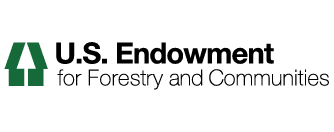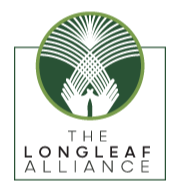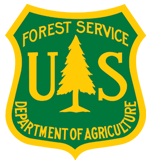Videos
OSU: Introduction to Prescribed Fire
Interested in learning how to conduct a safe and effective prescribed burn? Enroll in the OSU Extension Introduction to Prescribed Fire online course to learn best practices for conducting a safe and effective burn. The course features interactive learning activities and custom videos.
Winter Grazing - a Better Way to Feed
In this video, three livestock producers describe how extending the grazing season with winter grasses has saved them time and money, while also improving the environment; and they demonstrate the methods they used to achieve these savings. Sponsored by the NRCS - East National Technology Support Center.
Introduction to LANDFIRE video series
Through a short series of videos, learn about LANDFIRE: a shared program between federal wildland fire management programs that provides landscape scale geospatial products to support cross-boundary planning, management, and operations. Use LF data for landscape assessment, modeling, analysis, and more.
Reconnecting Cattle and Quail
Learn about the Working Lands for Wildlife program and work in Ohio between USDA-NRCS and local farmers and ranchers. Grazing cattle on warm season, native grasses is great for cattle as well as critical species like the Northern Bobwhite Quail. Video for landowners and cattle producers. Presented by Nick Schell (USDA-NRCS Ohio) and Dr. Pat Keyser (UT - Center for Native Grasslands Management) at the Ohio Forage and Grassland Council Conference in 2017.
National Association of State Foresters Weekly Newsletter April 16 2021
Smokey awardees named, NASF rallies support for new bill & Forest Stewardship Program...
Purdue University Help the Hellbender Brochures, Lesson Plans, Videos & Games
The Hellbender is a giant, aquatic salamander that has experienced severe population declines throughout its range. It is a sensitive species and there are a number of factors contributing to its declines. To help address the varied threats facing the Hellbender, Help the Hellbender has produced several new products focused on educating both stakeholders and the general public on ways that they can help protect hellbenders.
World of Wildland Fire YouTube Channel
The World of Wildland Fire YouTube channel includes videos on fuels, fire behavior, and fire ecology.
LANDFIRE YouTube Channel
The LANDFIRE YouTube channel includes videos on topics including LANDFIRE applications and case studies, webinars, and tutorials.
Wildland Fire Lessons Learned Center
Wildland Fire Lessons Learned Center provides community discussion boards, podcast episodes, videos, and other resources aimed at making wildland fire performance and organizations safer.
Planning Your Landowner Engagement Strategy to Reach Your Big Goals (Part II)
Part II of a webinar series hosted by TELE - Tools for Engaging Landowners Effectively
Regional abundance and local breeding productivity explain occupancy of restored habitats in a migratory songbird
Ecological restoration is a key tool in offsetting habitat loss that threatens biodiversity worldwide, but few projects are rigorously evaluated to determine if conservation objectives are achieved. We tested whether restoration outcomes for an imperiled bird, the Golden-winged Warbler (Vermivora chrysoptera; GWWA) met the assumptions of the ‘Field of Dreams’ hypothesis or whether local and regional population dynamics impacted restoration success. From 2015 to 18, we surveyed 514 points located in recently restored successional habitats. We used new- and published data on the survival of 341 nests and 258 fledglings to estimate GWWA breeding productivity. Occupancy and colonization of restored habitats were significantly higher in our Western Study Region (Minnesota and Wisconsin) than our Eastern Study Region (Maryland, Pennsylvania, and New Jersey), a pattern that mirrored broader regional population trends. At local scales, productivity was high in Eastern Pennsylvania (> 3 independent juveniles/pair/year) but low in Central Pennsylvania (1 juvenile/pair/year) while both Western and Central Minnesota hosted intermediate productivity (between 1 and 2 juveniles/pair/ year). Productivity and occupancy covaried locally in the Eastern Study Region, while occupancy was high in the Western Study Region, despite intermediate productivity. These differences have profound implications for restoration outcomes, as GWWA possessed robust capacity to respond to habitat restoration in both regions, but this capacity was conditional upon local productivity where the species is rare. Our findings suggest that, even when restoration efforts are focused on a single species and use comparable prescriptions, interactions among processes governing habitat selection, settlement, and productivity can yield variable restoration outcomes.
Thinning Forests to Save the Birds
An interesting and informative 8-minute video that explains how tree harvests are critical to saving a host of bird species that rely on young forest habitat for part of their annual life cycle.
Golden-winged Warbler Status Review and Conservation Plan
The Golden-winged Warbler Status Review was initiated over a decade ago when David Buehler, John Confer, and Ron Canterbury were funded by the US Fish & Wildlife Service to elaborate on what was originally a status assessment begun by Chuck Hunter in 1999. Over time, that original project received input from others and underwent numerous stalls, revisions, and reviews. The continuous stream of new information that so rapidly outpaced the writing of the document is actually a tribute to the tremendous dedication and energy of the Golden-winged Warbler Working Group and its partners. In this version of the Status Review, survey and trend estimates have been updated to include 2009 BBS trend information. Genetic data were updated to include birds sampled during the 2010 breeding season. We are pleased finally to release the Status Review, at the same time acknowledging that new research and conservation action will just as quickly outdate much of the information it summarizes. We prefer to think of this document as a Status Transition to a more hopeful future.
Working Lands for Wildlife (WLFW) Northern Bobwhite Grasslands and Savannas National Partnership Meeting Feb 23rd - 24th 2021
Presentations from the 2021 WLFW Northern Bobwhite, Grasslands and Savannas Partnership Meeting
Forest Management for Northern Bobwhite Quail
In this webinar, Steve Chapman, NBCI Forestry Coordinator, will discuss pine forest management opportunities and practices that can not only help to bring back the bobwhite but also can have an impact on slowing the decline of those numerous songbird, pollinator and other wildlife species.
Native Vegetation Investments Pay Conservation Dividends
Viewers will learn about native vegetation’s applicability to a myriad of conservation practices beyond wildlife uses through an exploration of the supporting scientific research applied throughout the tall grass prairie and southeastern grasslands regions. Topics covered will include soil conservation, water quality, air quality, soil health, forage, biomass and wildlife
Understory Herbicides for Bobwhites and Other Wildlife
Herbicides are an important tool in both forest and wildlife management in the south and particularly in southern pine management. The common practice of heavy chemical site prep prescriptions in forest management may not be appropriate in stands where restoration and wildlife habitat is the objective. The webinar will address herbicide uses in longleaf restoration with a focus on minimizing the impact herbicides have on a healthy and diverse groundcover, including the fine fuels and plants that are beneficial to bobwhite quail, whitetail deer and the wild turkey.
Maintaining Quail and Grassland Bird Habitat in the Agricultural Landscape
Northern bobwhite quail and many other grassland bird species have experienced significant population declines over the last several decades. Loss of native grassland habitat is one of the primary causes of these declines. The CP33 – Habitat Buffers for Upland Birds is a Continuous Conservation Reserve Program (CRP) practice that provides nesting and brooding habitat for quail and other grassland birds on less productive cropland field margins. The CP33 buffer practice can help maintain important native grassland habitat within an agricultural landscape. This webinar will discuss the CP33 practice requirements, their importance on the landscape and how best to establish, manage, and maintain the habitat quality for quail and grassland birds.
Managing Oak Forests for Northern Bobwhite Quail
The southeastern United States has millions of acres of oak dominated forests that have a closed canopy with limited herbaceous and shrub understory that northern bobwhite require. However, research has demonstrated that with adequate overstory thinning, and the use of frequent prescribed fire, these forests can support populations of Northern Bobwhite Quail, presenting perhaps the best opportunity for large-scale quail restoration in the region. Participants in the webinar will learn about managing oak forests and restoration efforts related to northern bobwhite quail.






